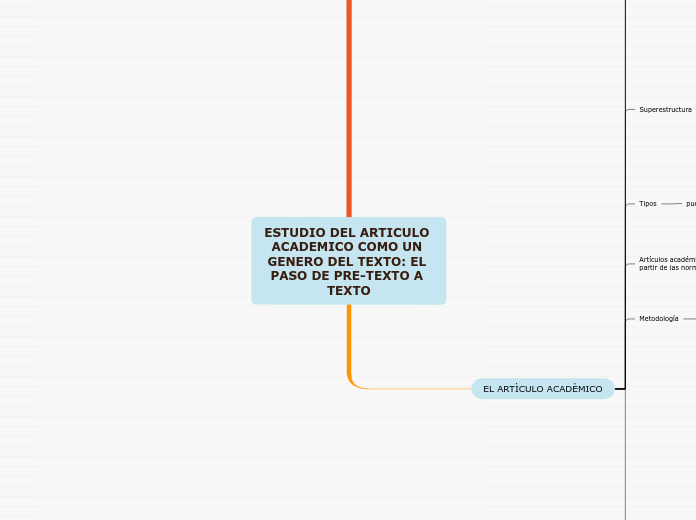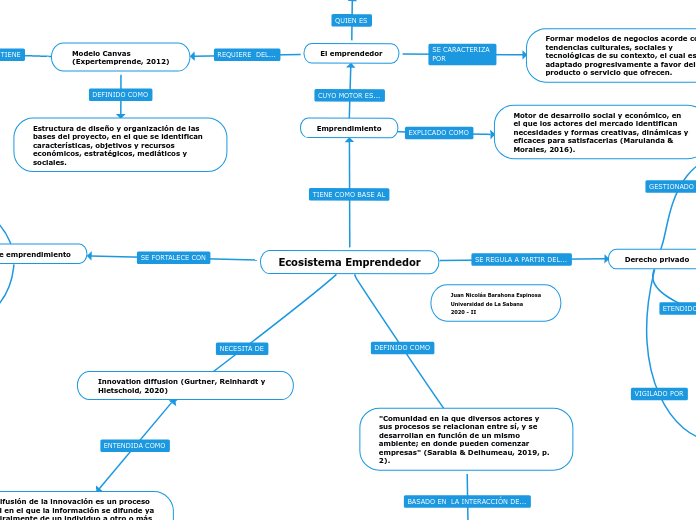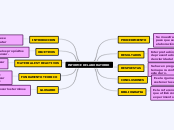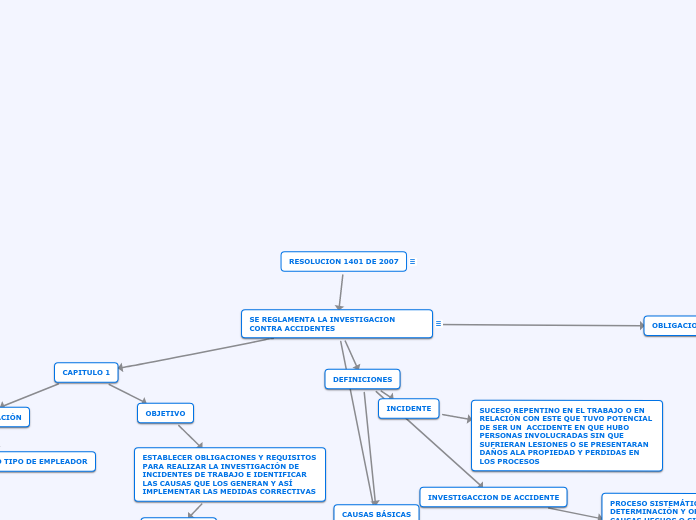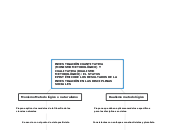ESTUDIO DEL ARTICULO ACADEMICO COMO UN GENERO DEL TEXTO: EL PASO DE PRE-TEXTO A TEXTO
To name your story, you have to think about the overall message and what you want your audience to understand from the story. Also, make it relevant and easy to remember.
EL ARTÌCULO ACADÈMICO
Resultados y discusión
El discurso
se conforma
por diferentes correcciones realizadas al género
uso de citas y organización lógica
uso reflexivo de la bibliografía
escritura académica
se caracteriza
por necesitar tiempo de
claridad
precisión
decantación
analizar el género artículo académico
un producto o texto final
Características del intermedio 3
reorganización lógica
7 párrafos
1 párrafo mas
Se separa el objetivo
Bibliografía
23 libros
para
su corrección final
Características del texto intermedio 2
Conclusiones
un comentario final en el párrafo 6
6 párrafos
Metodología es mucho mas exacta
El objetivo mas amplio
Se ha incluido el titulo e identificación del autor
paso
de trabajo de investigación
monográfico a artículo de investigación
Características del texto intermedio 1
Bibliografías
catorce libros consultados
La conclusión
1 cita
5 enunciados
3 párrafos
Adquisición del lenguaje y enseñanza de otras lenguas
Definición del lenguaje
Cerebro y lenguaje
Base teóricas
Introducción
5 párrafos
Características de las notas o del pre-texto
se guardan archivos con resumenes de los libros
están conformadas por cuatro preguntas
sólo coinciden
en
conclusión
Metodología
compara, analiza y organiza
la introducción y conclusión
de
cada producto intermedio
Artículos académicos a partir de las normas APA
La monografía
El articulo metodológico
El articulo teórico
El articulo de revisión
Los reportes de investigación
Tipos
de revisión
científicos
Superestructura
esta conformada por
referencia o bibliografía
las fuentes
discusión
analiza
el resultado
resultados
son
específicos
metodología
un procedimiento
introducción
hipótesis
objetivo
estudio
resumen
sintetiza las ideas centrales
titulo
describe el contenido del texto
Clasificación
según su
formalidad
informales
formales
finalidad
promotores de cambio
dirección
control
coordinación
operativos
función
pueden ser
analíticos
examinadores
comunicativos
Transmite y difunde
el conocimiento
presenta
un lenguaje
Representativo o referencial
oral
escrita
EL PROCESO DE PRODUCCION ESCRITA
The ending of a story is essential. We all know that if the ending is weak, what happened before loses its importance. So make it unpredictable, but fair. A resolved ending answers all the questions and ties up any loose threads from the plot.
Categorías
This is the closure section of the story.
See examples of possible outcomes below:
- all problems have been solved
- it's clear how each one of your characters ends up
- your main character is transformed by the challenge
Los cambios
Reflexión
Try answering these questions in order for you to come up with a closure:
- Have all problems been solved?
- Is it clear what happens with all your characters in the story?
- Has the challenged transformed your main character?
- How do the characters feel in the end?
Detenerse
Reformulacion
Try answering these questions to come up with a closure:
- Have all the problems been solved?
- Is there a clear picture of what happens with each character in the story?
- Has the challenge transformed your main character?
- How do the characters feel in the end?
Se distingue
This is the moment when the main character surpasses the last obstacle and finally faces their greatest challenge.
The climax usually follows one of these patterns:
- realization
- resolution
- choice
Type in your answer.
Texto 2
actualiza el texto 1
Texto 1
conforma
La carga semántica
Pre-texto
Sirve de parámetro
MARCO TEÒRICO
The middle of the story is where you add layers of complications that will lead to the end. Reveal more about the character's journey. Did their personality go through changes? How did they overcome the challenges? And as you build up the story’s central conflict, make it more personal to that character. Also, from the middle act, you have to lead into the final act.
se
Your character(s) need(s) motivation in order to solve the challenge(s).
considera
Why does your character need to confront this challenge? What does he/she expect to accomplish by solving it?
See a few examples:
- will marry in 3 days
- can fix the mistakes of the past
Género
determina el montaje del texto
Discurso
complejo y heterogéneo.
Una práctica social
Texto
Una unidad semántica.
INTRODUCCIÒN
In the beginning of the story (or the exposition), you will need to introduce the setting and characters. You might also want to introduce the main conflict. This part of the story is important because it gives the reader necessary background information and maybe even a first insight into a character’s personality.
Objetivo central
The setting (time & place) of a story can change throughout the plot.
es
The time of the story can also change. It can describe the event of a single day or can include an entire year's plot. Anyway, don't forget to mention it.
Reencontrar el proceso de textualización
del
Autor en el producto final.
La estadística
Characters are essential to a good story. Usually, the protagonist(s) is/are the most affected by the plot. Introduce a character by focusing on their actions, interests, and occupation, as the physical appearance doesn't make a difference in most cases.
señala
Type in the name of your character.
Mientras mas amplia sea la muestra, mayor posibilidad de generalización se obtiene.
Add other qualities/attributes of the character.
